Momosuke-bashi Bridge
Momosuke-bashi Bridge is a bridge across the Kiso River a little north of JR Nagiso Station.
The photo was taken from the right bank (west side).
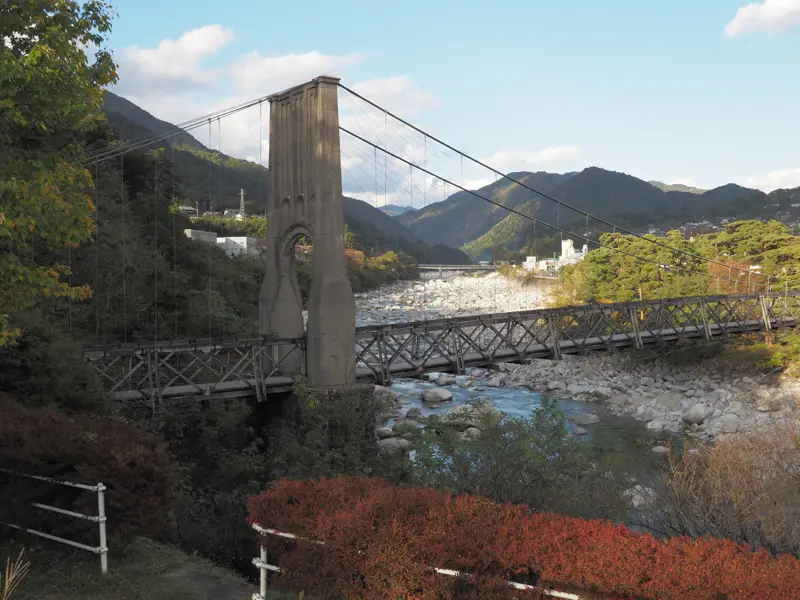
Momosuke-bashi was designated as a National Important Cultural Property in 1994 as part of the Yomikaki Power Station Facility, a Heritage of Modernization.
Momosuke-bashi is a suspension bridge built around 1922 by Daido Electric Power Company. It was built to transport construction materials for the Yomikaki Power Station from Midono Station (present-day Nagiso Station) by trolley tracks. In other words, it is a suspension bridge for construction.
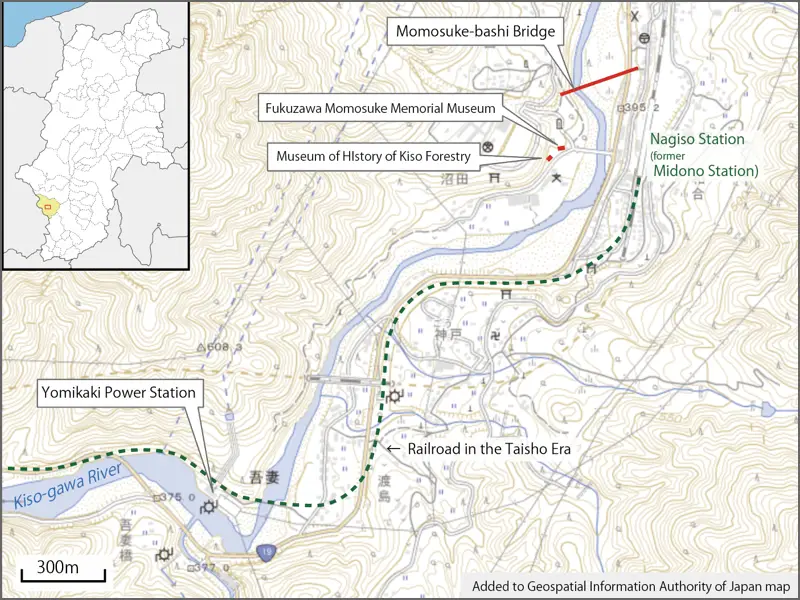
There is no established theory as to why the bridge was built in a wide area when it would have been more efficient to build it in a narrow area of the river.
Some people have suggested that the bridge was lengthened on purpose to make it look better, but I do not agree with them. I agreed with the reason that the narrowest point was due to the difference in elevation from the station and the fact that the land there could not be acquired.
In 1922, Momosuke Fukuzawa built a villa on the right bank of the Kiso-gawa River that also served as a lodging house for construction visitors (now the Fukuzawa Momosuke Memorial Museum). The trolley that crossed the Momosuke Bridge from Midono Station passed in front of the villa and climbed the cliff by an incline to the construction site.
Let’s actually cross the bridge. I will start from the right bank (west side of the bridge).
The bridge is 247 meters long and has three main towers. The west tower stands in front of me.
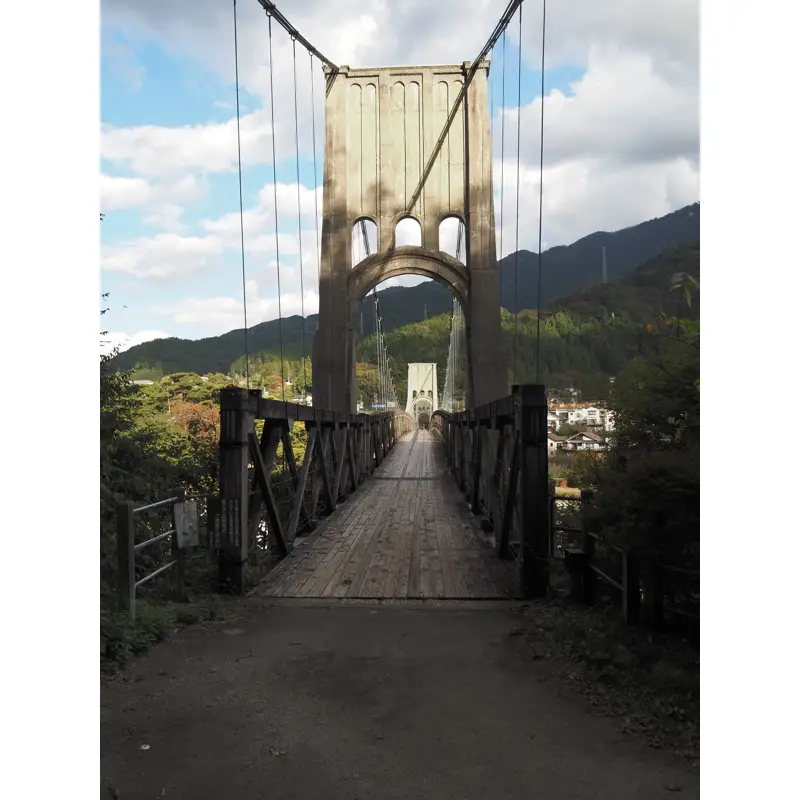
The effective width of the bridge is 2.7 m. It is reinforced with wooden stiffening trusses.
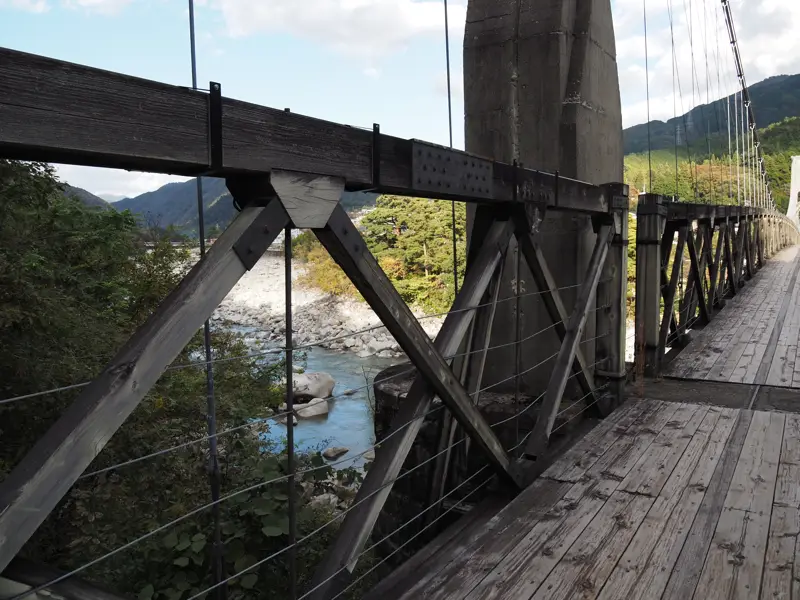
This is the second (center) main tower.
The two slightly darker lines in the center of the bridge are said to represent the trolley tracks that existed at that time.
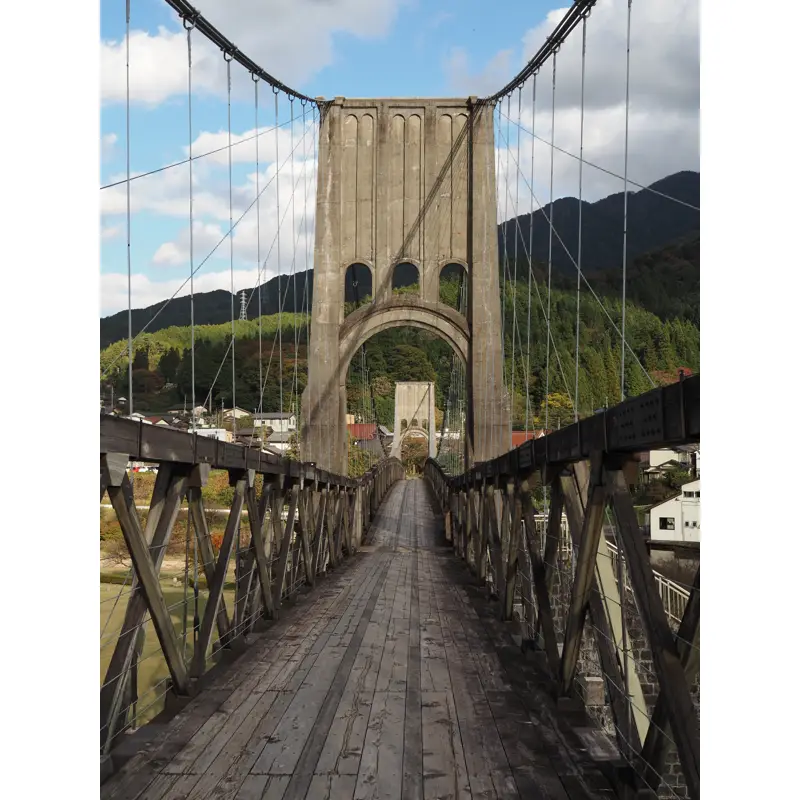
The third main tower.
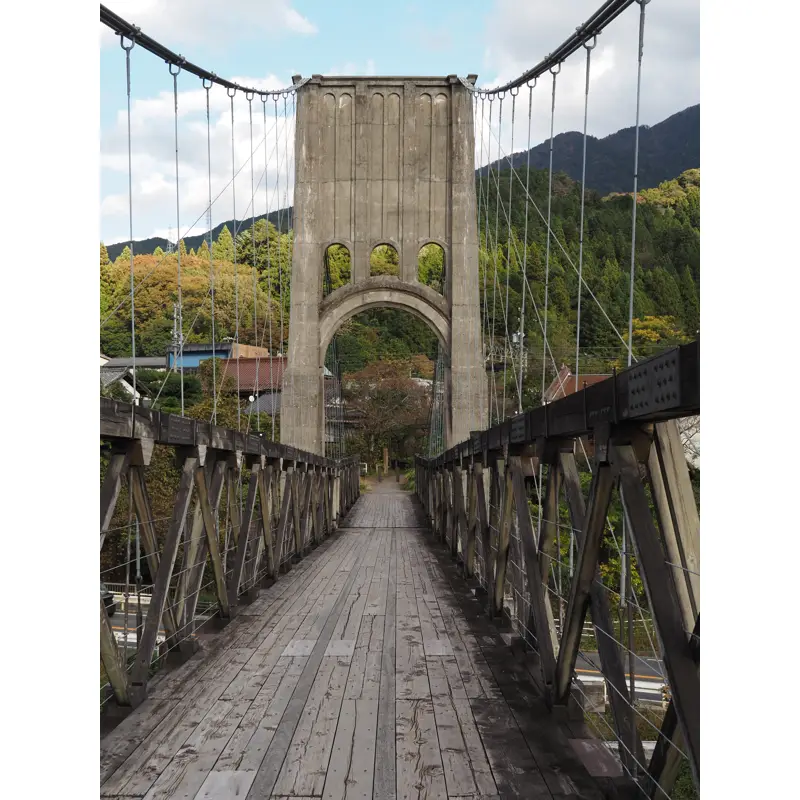
After passing through the main tower, I arrived at the other side of the river. Route 19 runs under this bridge.
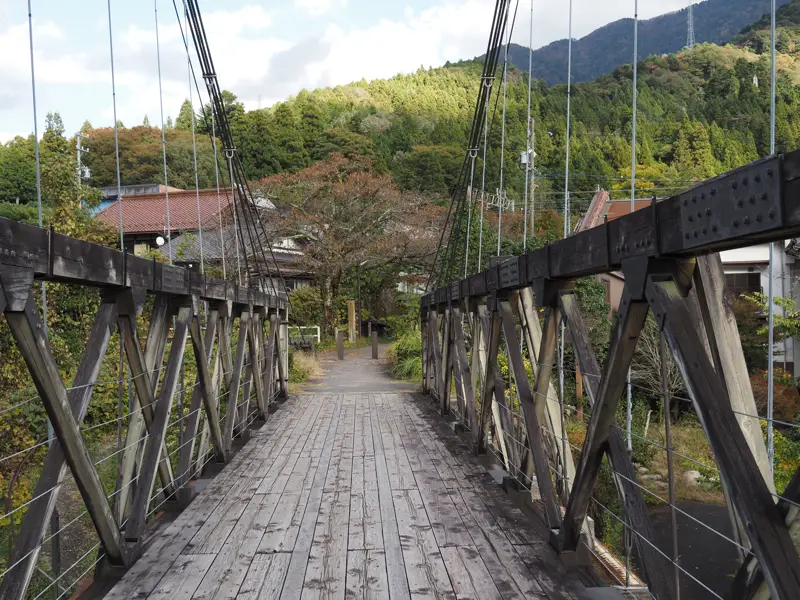
The position where the cable is fixed.
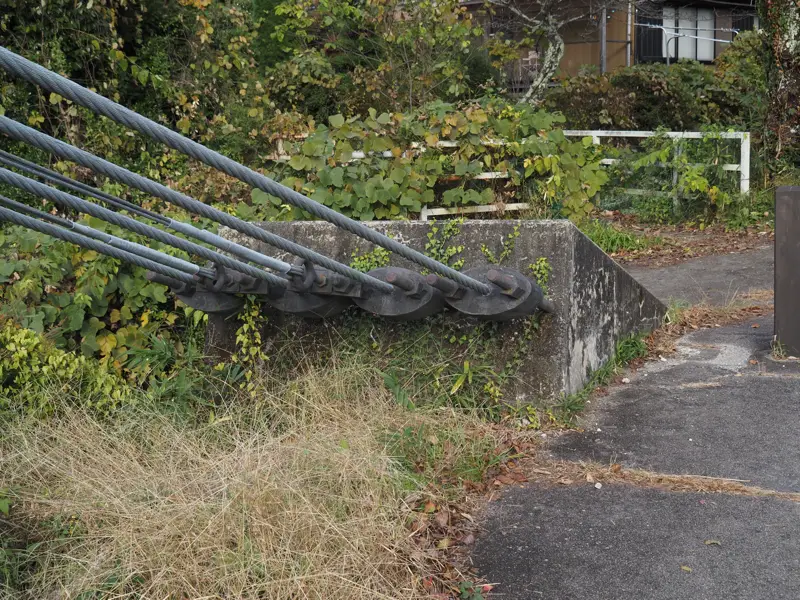
View from the east.

Momosuke-bashi was transferred to Yomikaki Village in 1950 and has been used as a village road for daily traffic. With a junior high school and high school located on the west bank, the bridge was also an important route for commuting to school.
Eventually, a new bridge was built downstream, and the role of the Momosuke-bashi was lost.
Then, due to flood damage and aging, the floorboards began to fall off, and the bridge was closed to traffic in 1978.
In 1988, the bridge was planned to be restored and repaired as part of the “Special Hometown Development Project,” including peripheral improvements, and in 1991 it was decided to restore the bridge as a “Heritage of Modernization”. Actual restoration work was carried out from November 1992 to September 1993.
Restoration Policies
(1) The main concrete tower will not be reinforced structurally, and only a limited number of people will be allowed to pass through. However, measures will be taken to prevent surface deterioration.
(2) The cables will be completely renewed. Reuse usable fittings, etc.
(3) Wooden parts will be completely renewed. The form will remain as it was at that time.
The construction was completed and the bridge was opened to traffic on October 17, 1993.
Now, crossing the bridge again.
This bridge has a central tower that allows access down to the riverbank.
This is the entrance to the descent.
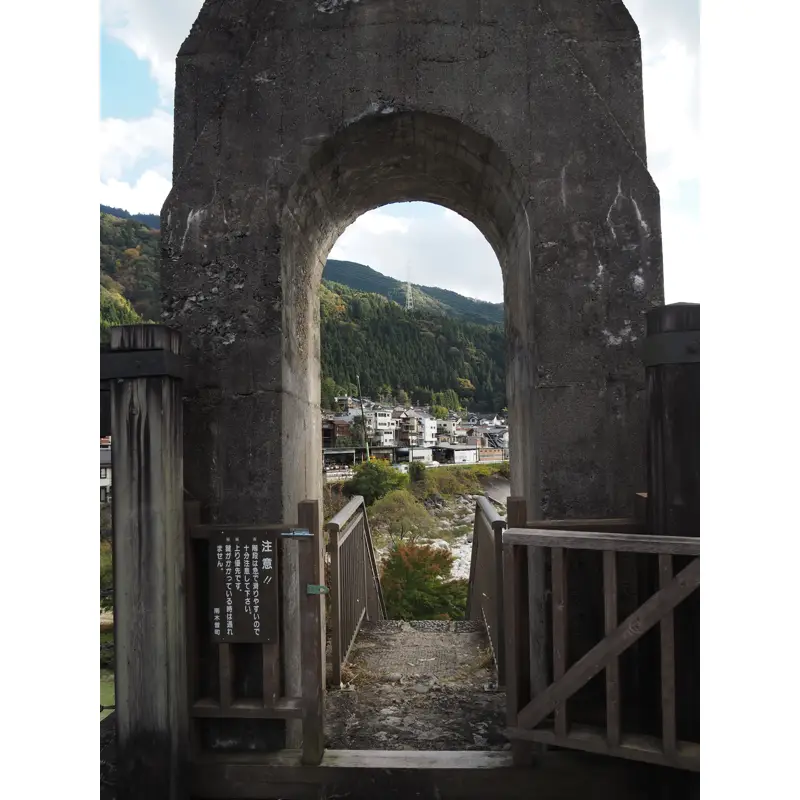
Going down the stairs and looking up the main tower from the riverbank.
The left side of the photo is the riverbank, and the right side is the river park.
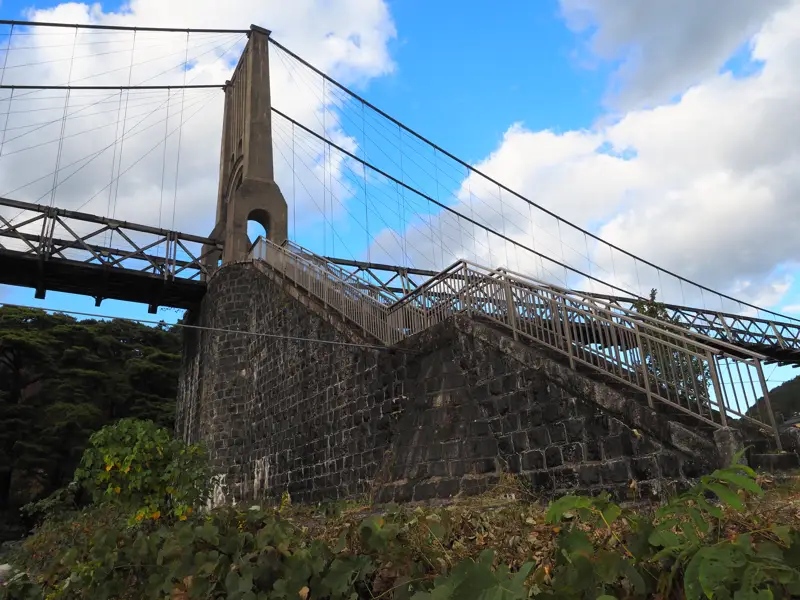
Walking along the riverbank and photographing the bridge from below.

Walking around and looking from various angles.
The bridge is fun to cross, but it is also fun to look up.
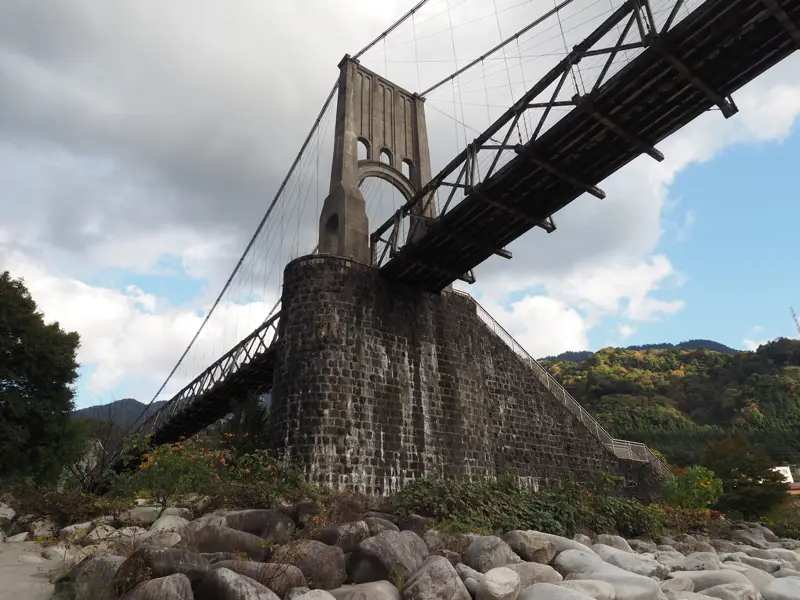
After this, I went back up the stairs and walked to the west bank to finish the tour.
After crossing the bridge, I went to visit the Museum of History of Kiso Forestry and the Momosuke Fukuzawa Memorial Museum.
Next to the museum of history, a part of the Momosuke-bashi Bridge was kept there.
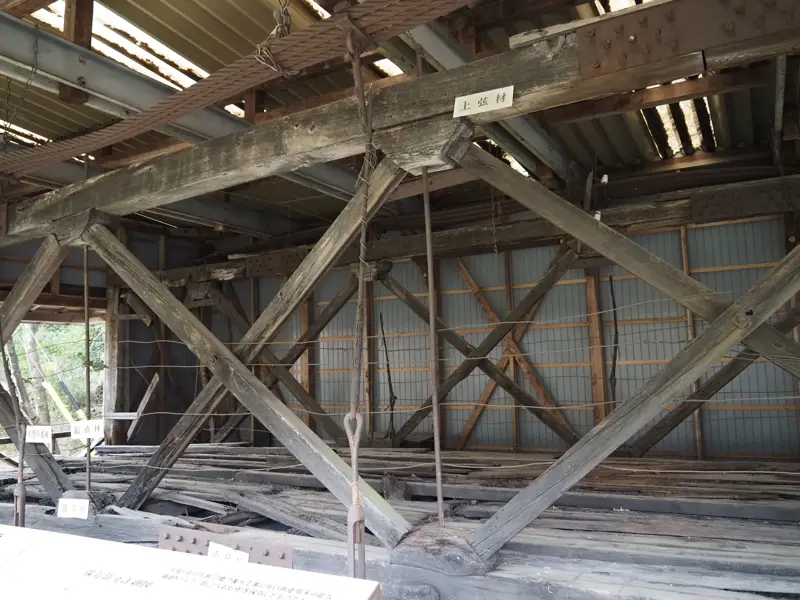
By the way, are these components included in the cultural property designation?
The explanatory board at the Yomikaki Power Station, which I quoted in my previous article, reads as follows
“Momosuke-bashi Bridge (wooden suspension bridge for transporting construction materials for the power station, 247m, restored and repaired in 1992-1995, attached, a set of old timbers) owned by Nagiso Town”.
However, according to the Agency for Cultural Affairs’ database of nationally designated cultural properties, there is nothing attached to the Momosuke-bashi Bridge.
It also seems strange that it says “a SET of old timbers” when only a small portion of the old timbers are in storage.
Is the explanatory board of the power station incorrect?
Or was it included at the time of designation but subsequently removed?
[Reference]
“Momosuke-bashi Bridge Preservation Work” (Norihiko Hashiba and Kazumitsu Goto / 'The Bridges’ / June 1993)
“Modern Civil Engineering Heritage and Momosuke Bridge” (Shunsuke Baba / 'The Bridges’ /July 1993)
“Completion of the restoration work of Momosuke Bridge” (Kenichi Taguchi / ‘Bulletin of the Society of Industrial Archaeology, Japan’ No.74 / 1994)
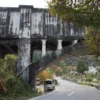
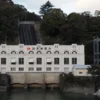
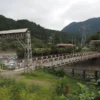
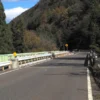
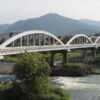
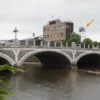
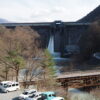
Discussion
New Comments
No comments yet. Be the first one!